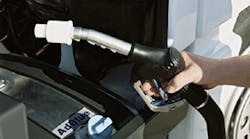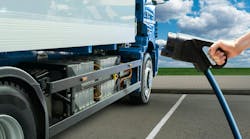Despite current opposition by the U.S. Environmental Protection Agency, selective catalytic reduction (SCR) technology is the only practical path to meeting 2010 U.S. diesel engine emissions requirements, according to Andreas Renschler, the new head of DaimlerChrysler AG’s Commercial Vehicle Division.
“SCR is superior to EGR (exhaust gas recirculation) and filter solutions,” he said late last week at an advanced technology demonstration in Germany. “It is the worldwide solution [to diesel emissions] and will be the technology of choice for all of our U.S. engines.” DC builds both Detroit Diesel and Mercedes Benz engines at its Michigan Detroit Diesel plant for Freightliner, Sterling and Western Star trucks.
EPA has opposed SCR because it requires trucks to carry a second fuel tank for urea, which is injected into the exhaust stream. Theoretically engine performance is unchanged if the tank is allowed to run dry, but emissions rise dramatically. EPA also says the lack of a distribution infrastructure for refilling truck urea tanks makes SCR impractical.
By the end of this year, DC will have 5,000 SCR-equipped trucks in Europe using its branded BlueTec urea. The technology not only allows those trucks to meet the new, more stringent Euro 5 emissions requirements, “but also reduces fuel consumption,” said Renschler.
Confident that both of EPA’s objections can be overcome, Renschler believes that “at some point we will have to put fuel consumption into the [emissions-reduction] formula.” Fuel consumption is tied directly to CO2 emissions, which are recognized as the major source of greenhouse gasses contributing to global warming.
Combined with rapidly rising fuel prices and concern over dwindling oil supplies, “the U.S. will recognize SCR as the leading future technology for emissions,” he said.




